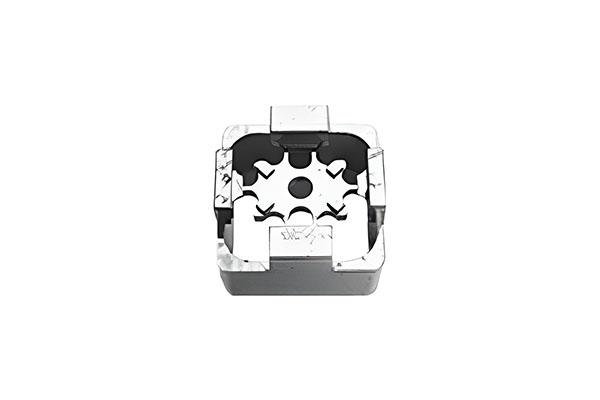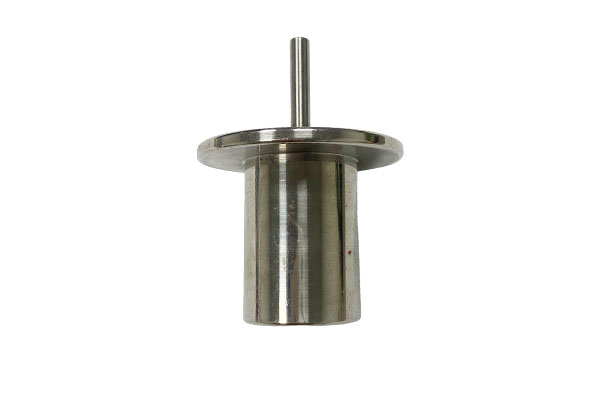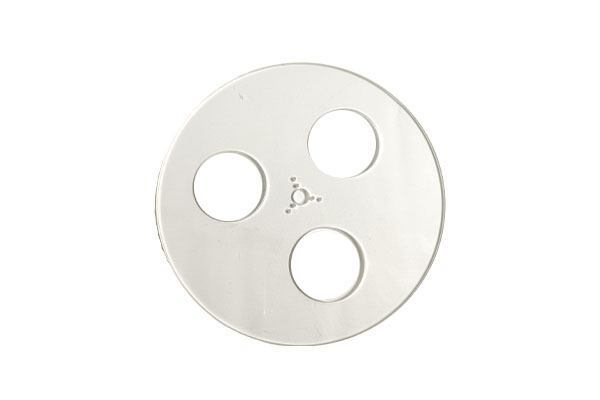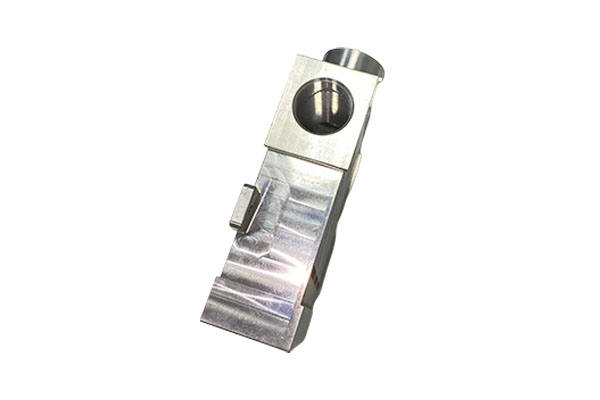Wire cutting parts processing meets diverse needs
Release Time : 2025-07-01
In modern manufacturing, the complexity and customization of products are constantly increasing, and the requirements for the precision, shape and material of parts are becoming increasingly stringent. Traditional mechanical processing methods can no longer fully meet these emerging needs, and wire cutting parts processing, with its unique process advantages, is becoming an important means for many industries to achieve high-precision and multi-variety production.
1. Adapt to complex structures and break through traditional processing limitations
One of the biggest features of wire cutting technology is that it can easily cope with various complex geometric shapes. Whether it is a special-shaped hole, a tiny contour or a continuous curve, as long as it is programmed through CAD/CAM software, precise processing can be achieved. This flexibility makes it show strong applicability in mold manufacturing, electronic components, medical devices and other fields.
For example, in the precision mold industry, many key parts of stamping molds and plastic molds require extremely high contour accuracy and surface finish, and wire cutting can complete the processing of these difficult features at one time, avoiding the error accumulation problem caused by multiple clamping.
2. Support multiple materials and expand the application boundaries
With the development of materials science, more and more high-performance metal materials are widely used in the industrial field, such as cemented carbide, titanium alloy, stainless steel, hardened steel, etc. These materials often have extremely high hardness or wear resistance, and traditional cutting tools are difficult to process them effectively.
Wire cutting adopts the principle of discharge corrosion and does not rely on the physical contact of the tool, so it is almost not limited by the hardness of the material. Whether the workpiece has been heat treated or not, high-precision cutting can be performed directly. This feature makes wire cutting widely used in aerospace, military industry, semiconductor and other industries, providing a strong guarantee for the refined processing of special materials.
3. Achieve efficient customization and help small batch and multi-variety production
In the current market environment, companies are paying more and more attention to product differentiation and personalized customization. Under this trend, wire cutting parts processing has become an ideal choice for small and medium batch and multi-variety orders with its high programmability and flexible production capacity.
Compared with traditional processing equipment, wire cutting machine tools do not need to frequently change tools or adjust fixtures when changing processing tasks. You only need to modify the processing program to quickly switch product types. This "zero changeover" advantage greatly shortens the preparation time and improves equipment utilization, which is especially suitable for the R&D trial production stage or on-demand production mode.
4. Improve processing accuracy and meet high-end manufacturing standards
For some key parts, dimensional accuracy and surface quality directly affect their performance and service life. Wire cutting technology can control processing accuracy within the micron range and achieve ultra-smooth surface effects of Ra≤0.8μm, which fully meets the requirements of high-precision application scenarios such as automotive parts, optical instruments, and sensors.
In addition, wire cutting also has good repeat positioning accuracy to ensure consistency between parts in the same batch, which is particularly important for automated assembly and large-scale matching.
5. Reduce processing risks and improve safety and stability
Since there is no direct mechanical cutting force acting on the workpiece during wire cutting, it will not cause material deformation or stress concentration, which is particularly suitable for the processing of thin-walled and slender parts. Such parts are prone to bending, cracking and other problems during traditional turning or milling, while wire cutting can effectively avoid these risks and ensure the yield rate and processing stability.
At the same time, modern wire cutting equipment is generally equipped with functions such as automatic wire threading, wire cutting, and liquid level monitoring, which greatly improves the safety and intelligence level of operation and reduces the need for manual intervention.
6. Promote green manufacturing and meet the trend of sustainable development
In addition to its performance advantages, wire cutting parts processing also performs well in environmental protection. The cutting medium it uses is mainly deionized water, supplemented by a trace amount of conductive liquid, and there is almost no harmful gas emission. Compared with the traditional cutting oil cooling method, it is easier to recycle and reduce environmental pollution.
In addition, due to its high processing efficiency and low material loss, it also helps to reduce the waste of raw materials and improve resource utilization efficiency, which is in line with the general direction of the current green transformation of the manufacturing industry.
Wire cutting parts processing is constantly breaking the boundaries of traditional manufacturing and meeting various processing needs from microelectronic devices to large industrial equipment. It not only improves manufacturing precision and efficiency, but also brings stronger product competitiveness and market responsiveness to enterprises.
1. Adapt to complex structures and break through traditional processing limitations
One of the biggest features of wire cutting technology is that it can easily cope with various complex geometric shapes. Whether it is a special-shaped hole, a tiny contour or a continuous curve, as long as it is programmed through CAD/CAM software, precise processing can be achieved. This flexibility makes it show strong applicability in mold manufacturing, electronic components, medical devices and other fields.
For example, in the precision mold industry, many key parts of stamping molds and plastic molds require extremely high contour accuracy and surface finish, and wire cutting can complete the processing of these difficult features at one time, avoiding the error accumulation problem caused by multiple clamping.
2. Support multiple materials and expand the application boundaries
With the development of materials science, more and more high-performance metal materials are widely used in the industrial field, such as cemented carbide, titanium alloy, stainless steel, hardened steel, etc. These materials often have extremely high hardness or wear resistance, and traditional cutting tools are difficult to process them effectively.
Wire cutting adopts the principle of discharge corrosion and does not rely on the physical contact of the tool, so it is almost not limited by the hardness of the material. Whether the workpiece has been heat treated or not, high-precision cutting can be performed directly. This feature makes wire cutting widely used in aerospace, military industry, semiconductor and other industries, providing a strong guarantee for the refined processing of special materials.
3. Achieve efficient customization and help small batch and multi-variety production
In the current market environment, companies are paying more and more attention to product differentiation and personalized customization. Under this trend, wire cutting parts processing has become an ideal choice for small and medium batch and multi-variety orders with its high programmability and flexible production capacity.
Compared with traditional processing equipment, wire cutting machine tools do not need to frequently change tools or adjust fixtures when changing processing tasks. You only need to modify the processing program to quickly switch product types. This "zero changeover" advantage greatly shortens the preparation time and improves equipment utilization, which is especially suitable for the R&D trial production stage or on-demand production mode.
4. Improve processing accuracy and meet high-end manufacturing standards
For some key parts, dimensional accuracy and surface quality directly affect their performance and service life. Wire cutting technology can control processing accuracy within the micron range and achieve ultra-smooth surface effects of Ra≤0.8μm, which fully meets the requirements of high-precision application scenarios such as automotive parts, optical instruments, and sensors.
In addition, wire cutting also has good repeat positioning accuracy to ensure consistency between parts in the same batch, which is particularly important for automated assembly and large-scale matching.
5. Reduce processing risks and improve safety and stability
Since there is no direct mechanical cutting force acting on the workpiece during wire cutting, it will not cause material deformation or stress concentration, which is particularly suitable for the processing of thin-walled and slender parts. Such parts are prone to bending, cracking and other problems during traditional turning or milling, while wire cutting can effectively avoid these risks and ensure the yield rate and processing stability.
At the same time, modern wire cutting equipment is generally equipped with functions such as automatic wire threading, wire cutting, and liquid level monitoring, which greatly improves the safety and intelligence level of operation and reduces the need for manual intervention.
6. Promote green manufacturing and meet the trend of sustainable development
In addition to its performance advantages, wire cutting parts processing also performs well in environmental protection. The cutting medium it uses is mainly deionized water, supplemented by a trace amount of conductive liquid, and there is almost no harmful gas emission. Compared with the traditional cutting oil cooling method, it is easier to recycle and reduce environmental pollution.
In addition, due to its high processing efficiency and low material loss, it also helps to reduce the waste of raw materials and improve resource utilization efficiency, which is in line with the general direction of the current green transformation of the manufacturing industry.
Wire cutting parts processing is constantly breaking the boundaries of traditional manufacturing and meeting various processing needs from microelectronic devices to large industrial equipment. It not only improves manufacturing precision and efficiency, but also brings stronger product competitiveness and market responsiveness to enterprises.







